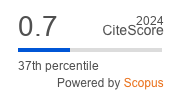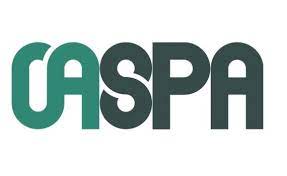Hepatitis B virus infection in pregnant women in Baghdad
DOI:
https://doi.org/10.47723/p7sgtj95Keywords:
hepatitis, pregnant, screeningAbstract
Background: Globally, hepatitis B is one of the
most common infectious diseases. Estimates
indicate that at least 2 billion people have been
infected with the hepatitis B virus (HBV), with
more than 378 million people being chronic
carriers. Those individuals at higher risk for
acquiring HBV and transmitting disease like
pregnant women should be screened for hepatitis
B surface
antigen (HBsAg) to prevent
transmission by vaccination and operation.
Aim of study: The aim of this study was to
determine the prevalence of HBsAg and its
associated parameters in pregnant women who
referred to antenatal clinic in Baghdad Province.
Methods: The 234 apparently healthy pregnant
women and their families, husbands and children
were selected as study subjects from among those
who had attained prenatal care clinic in Baghdad
province between 2010 to 2012. Serological test
was done for HBV using ELISA test (Dialab
REF:Z00360,LOT2052-2).
Results: Of these, 234 cases were brought into the
study. Their age were ranged from 16-42 years old.
Based on a different parameters , women positive
for HBV and their children were negative
constitute the highest percentage 85.4% and lowest
one was pregnant women who lived with positive
family history of HBV were 8.9%.
Conclusions: The seroprevalence of HBsAg was
of moderate severity according to WHO. This
finding would suggest for the introduction of
routine screening for HBV to all pregnant women
during the antenatal period, and that “at birth dose”
vaccination is given to new born babies of mothers
found to be HBsAg positive so as to reduce and
prevent the spread of infection. However more data
is required from larger studies to support the
findings so that ultimately this can be
recommended as a policy. Background: Globally, hepatitis B is one of the
most common infectious diseases. Estimates
indicate that at least 2 billion people have been
infected with the hepatitis B virus (HBV), with
more than 378 million people being chronic
carriers. Those individuals at higher risk for
acquiring HBV and transmitting disease like
pregnant women should be screened for hepatitis
B surface
antigen (HBsAg) to prevent
transmission by vaccination and operation.
Aim of study: The aim of this study was to
determine the prevalence of HBsAg and its
associated parameters in pregnant women who
referred to antenatal clinic in Baghdad Province.
Methods: The 234 apparently healthy pregnant
women and their families, husbands and children
were selected as study subjects from among those
who had attained prenatal care clinic in Baghdad
province between 2010 to 2012. Serological test
was done for HBV using ELISA test (Dialab
REF:Z00360,LOT2052-2).
Results: Of these, 234 cases were brought into the
study. Their age were ranged from 16-42 years old.
Based on a different parameters , women positive
for HBV and their children were negative
constitute the highest percentage 85.4% and lowest
one was pregnant women who lived with positive
family history of HBV were 8.9%.
Conclusions: The seroprevalence of HBsAg was
of moderate severity according to WHO. This
finding would suggest for the introduction of
routine screening for HBV to all pregnant women
during the antenatal period, and that “at birth dose”
vaccination is given to new born babies of mothers
found to be HBsAg positive so as to reduce and
prevent the spread of infection. However more data
is required from larger studies to support the
findings so that ultimately this can be
recommended as a policy. Background: Globally, hepatitis B is one of the
most common infectious diseases. Estimates
indicate that at least 2 billion people have been
infected with the hepatitis B virus (HBV), with
more than 378 million people being chronic
carriers. Those individuals at higher risk for
acquiring HBV and transmitting disease like
pregnant women should be screened for hepatitis
B surface
antigen (HBsAg) to prevent
transmission by vaccination and operation.
Aim of study: The aim of this study was to
determine the prevalence of HBsAg and its
associated parameters in pregnant women who
referred to antenatal clinic in Baghdad Province.
Methods: The 234 apparently healthy pregnant
women and their families, husbands and children
were selected as study subjects from among those
who had attained prenatal care clinic in Baghdad
province between 2010 to 2012. Serological test
was done for HBV using ELISA test (Dialab
REF:Z00360,LOT2052-2).
Results: Of these, 234 cases were brought into the
study. Their age were ranged from 16-42 years old.
Based on a different parameters , women positive
for HBV and their children were negative
constitute the highest percentage 85.4% and lowest
one was pregnant women who lived with positive
family history of HBV were 8.9%.
Conclusions: The seroprevalence of HBsAg was
of moderate severity according to WHO. This
finding would suggest for the introduction of
routine screening for HBV to all pregnant women
during the antenatal period, and that “at birth dose”
vaccination is given to new born babies of mothers
found to be HBsAg positive so as to reduce and
prevent the spread of infection. However more data
is required from larger studies to support the
findings so that ultimately this can be
recommended as a policy. Background: Globally, hepatitis B is one of the
most common infectious diseases. Estimates
indicate that at least 2 billion people have been
infected with the hepatitis B virus (HBV), with
more than 378 million people being chronic
carriers. Those individuals at higher risk for
acquiring HBV and transmitting disease like
pregnant women should be screened for hepatitis
B surface
antigen (HBsAg) to prevent
transmission by vaccination and operation.
Aim of study: The aim of this study was to
determine the prevalence of HBsAg and its
associated parameters in pregnant women who
referred to antenatal clinic in Baghdad Province.
Methods: The 234 apparently healthy pregnant
women and their families, husbands and children
were selected as study subjects from among those
who had attained prenatal care clinic in Baghdad
province between 2010 to 2012. Serological test
was done for HBV using ELISA test (Dialab
REF:Z00360,LOT2052-2).
Results: Of these, 234 cases were brought into the
study. Their age were ranged from 16-42 years old.
Based on a different parameters , women positive
for HBV and their children were negative
constitute the highest percentage 85.4% and lowest
one was pregnant women who lived with positive
family history of HBV were 8.9%.
Conclusions: The seroprevalence of HBsAg was
of moderate severity according to WHO. This
finding would suggest for the introduction of
routine screening for HBV to all pregnant women
during the antenatal period, and that “at birth dose”
vaccination is given to new born babies of mothers
found to be HBsAg positive so as to reduce and
prevent the spread of infection. However more data
is required from larger studies to support the
findings so that ultimately this can be
recommended as a policy.














